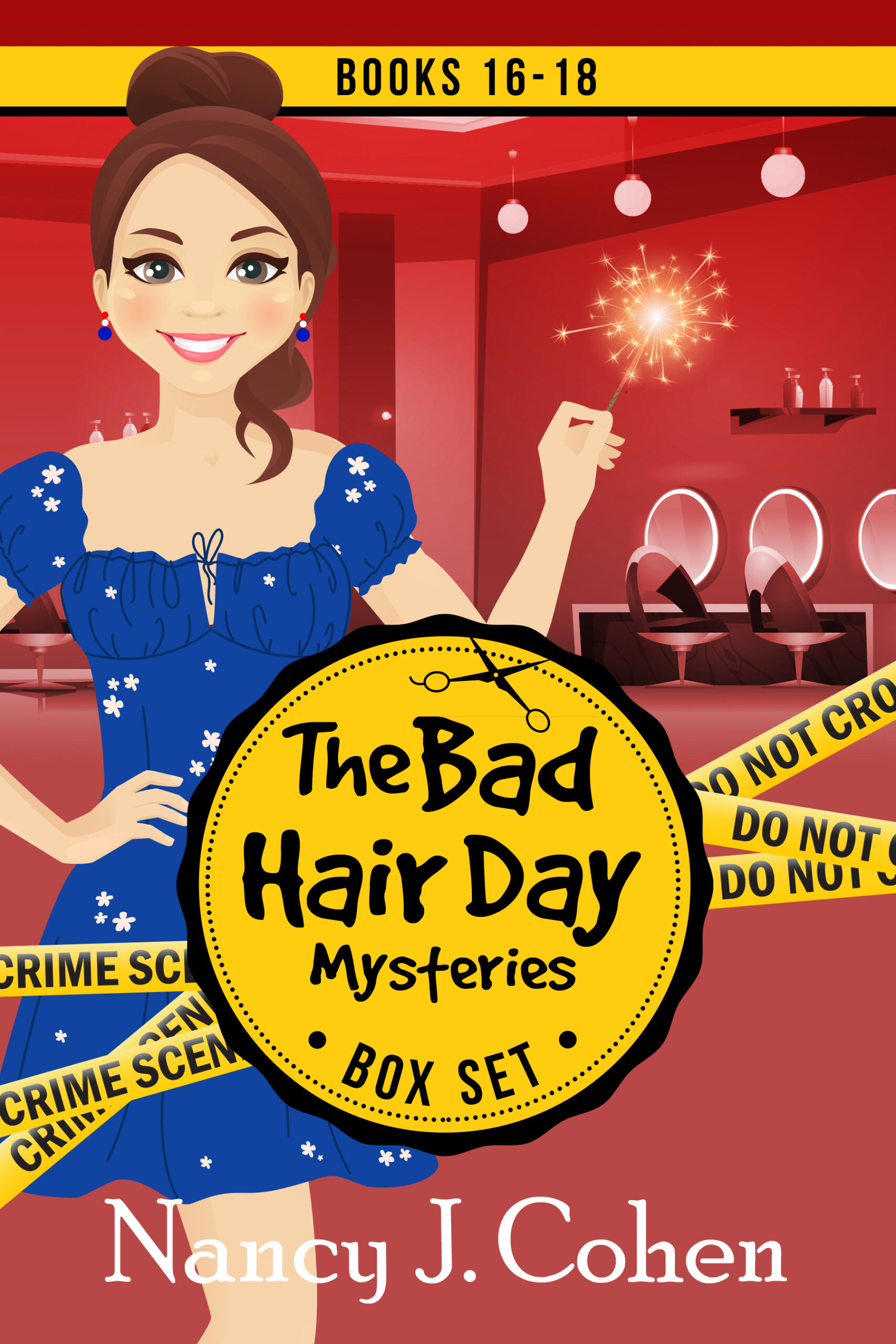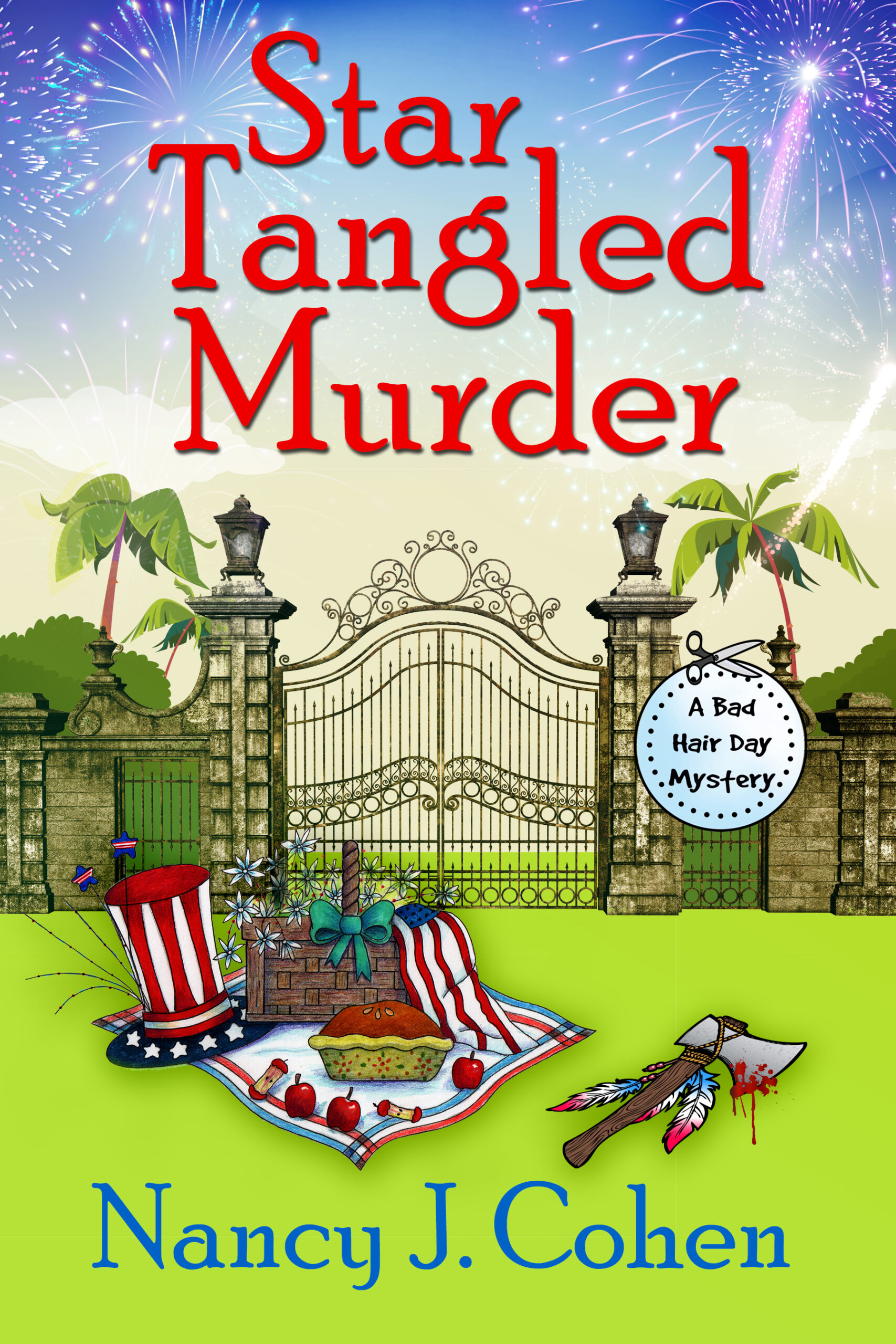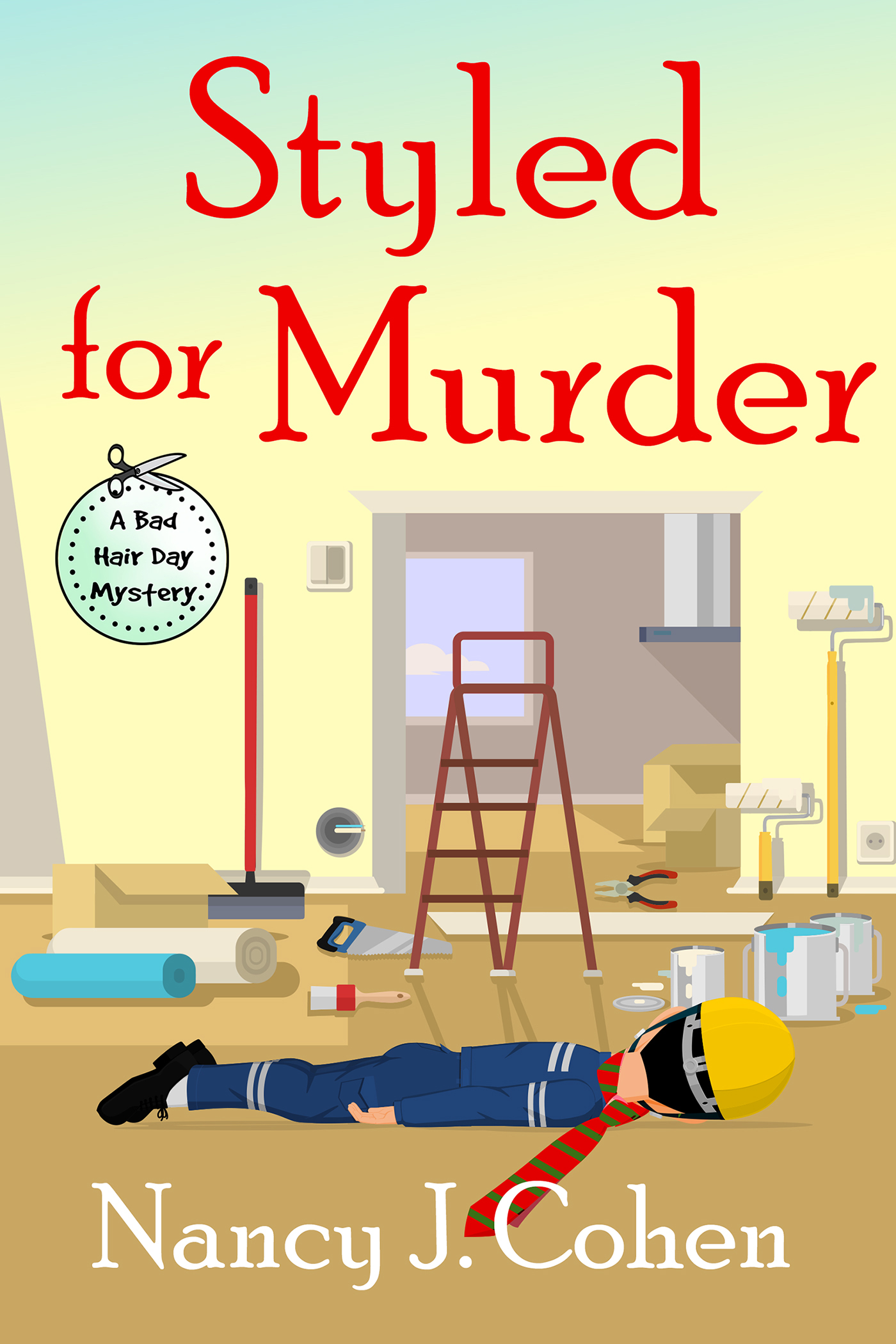Once you’ve written several books in your mystery series, it gets harder to come up with new and interesting material. The story has to engage your senses as a writer if you want to entice readers. You’ll want to avoid repetition such as means of murder and motives. And you need to vary the locales without going too far afield. Probably the most important element is to grow your characters. Let’s look at what you can do to bring excitement to each story in a long-term series.
1. Vary the setting within the setting. My Bad Hair Day cozy mystery series is set in fictional Palm Haven, Florida. But each story has its own milieu. Permed to Death, book number one, introduces hairstylist and amateur sleuth Marla Shore in her hair salon when a grumpy client dies in the shampoo chair. Subsequent stories involve a haunted hotel, a sports club, a wealthy family’s estate, a beauty trade show, a wedding and a day spa. Readers come to love the recurrent characters and expect to see them again, so you can’t deviate from the hometown too often. I’ve taken Marla and her husband, Detective Dalton Vail, on a Caribbean cruise and later on a dude ranch honeymoon in Arizona. For me, those stories are particular fun, but I can’t do them on a regular basis. Readers like to return to the same environment which becomes a character in itself. To avoid boredom, you have to take the same background and change it up enough to keep it interesting for you and your readers.
2. Avoid using the same murder method twice. Have you poisoned a victim already with a plant potion? Use snake venom next time. Or try shooting, hanging, stabbing, bashing on the head, pushing down the stairs, etc. Avoid repetition and be creative. Also vary the villain’s motives. You don’t want two stories in a row where a jealous lover did the deed. Think of your negative motivators—greed, envy, protection of a loved one, guarding one’s reputation, revenge, righting a perceived wrong—to provide variety.
3. Character growth is critically important. Your protagonists should evolve like people do in real life. Who surrounds them in terms of family, friends, and colleagues? How do their relationships change in each story? What’s the overall emotional journey for your main character? What new person can you add to spice things up? It could be a new friend, an old flame, a secret baby, a new boss, or a romantic interest. Keeping your main character static won’t work. The protagonist must continually adapt and develop expanding goals while letting insights guide her along the way.
4. Include a research or historical angle that excites you in a story. In Facials Can Be Fatal, I used excerpts from my father’s true life 1935 travel journal, which detailed his trip to Florida in simpler times. History plays a part in this story that includes tales of shipwrecks and pirates off the Florida coast. For Trimmed to Death, I’m researching olive oil scams. I am an olive fan so learning about this product interests me. Other topics I’ve explored have included the pet fur trade, biohazardous waste disposal, tilapia breeding, the prepper movement, and more. These tidbits of information snag my interest and provide something fresh for readers, too. Avoid info dumps, however, where you have long expository paragraphs with too much detail. Your research shouldn’t show. It should enhance your story.
5. Sprinkle in local issues or social problems that concern you. In Hair Brained, one character tells Marla about the risks to children left in hot cars. This is a big issue in Florida where child deaths from this cause are notable. It’s a preventable tragedy and I include tips for prevention in my story. My books also touch upon child-drowning prevention, another issue in a locale with so many backyard pools. These types of issues provide added depth to your story, but do it in a way that matches your chosen genre. If you’re writing humorous cozies, for example, things can’t get too serious. There are “edgier” cozies, but is this what you’re known for? You want to meet reader expectations. It’s okay to change things up once in a while but keep your author brand in mind and don’t stray too far.
6. Introduce enough of past events and relationships to clue in new readers when they pop into your series later down the road, but not too much that you give away previous plots. You also don’t want to bore your long-term readers, so keep this backstory to a minimum. It’s a delicate line to tread. Each story should feel like a standalone to newcomers but make fans happy to see what’s evolved personally for your characters in this latest book.
It gets harder to find a fresh angle as you get further along in your series. While avoiding repetition, you have to maintain the setting and characters that readers have come to love. What tips do you have to offer? As readers, how do feel about this topic?
11 thoughts on “Keeping A Series Fresh”
Comments are closed.

























A very timely topic for me!
Yes, it’s timely for us both.
Wonderful advice regarding keeping a mystery series fresh like all your writing advice.:)
Thank you, Marilyn!
The fact that you practice what you preach is what makes the Bad Hair Day Mysteries so enjoyable. Reading your list of tips reminds me just how much detail and hard work go into a good story. Character development is especially important to me as a reader. Even if the settings are changed but the same old characters are doing the same old things I will lose interest in the series. I was very disappointed and stopped reading a long-time favorite author when I read 3 of her books in a row and recognized all the cut & paste descriptions about people and places.
Your comments are spot on, Sally. It takes effort to make each book different in some ways and yet the same in others.The series that taught me the most about character growth was Horatio Hornblower. I could skim through the naval battles but I couldn’t wait to see what would happen to our hero next.
I try to keep track of names I’ve used. I have inadvertently (in drafts) used a name over again. This doesn’t include characters who appear in both books. Gotta Keep on my toes!
Names are a problem for me, but not in that I repeat them. I use names that are too similar, like Deanne, Dalton, and Darryl in the same story. Often I don’t catch it until later in my WIP, so you’re smart to keep track.
My critique group has commented that I sometimes use the same first initial for several names in a story. Didn’t see it until they said so. What I found the bigger challenge was whether to age a character. I had been slowly advancing a protagonist when I realized I had started two other key characters at too old an age. I can’t freeze them and advance my sleuth. Difficult to deal with.
Yes, this is something that may need advance planning. I figured out the ages of my recurrent characters and their birthdays. My stories take place right after or several months following the last installment. Marla’s aged five years from book one to fifteen.
That is associate degree particularly smart written article. ready to i’ll be able to watch out to marker it and are available back to search out out additional of your useful knowledge. several thanks for the post. ready to|i’ll be able to truly return.